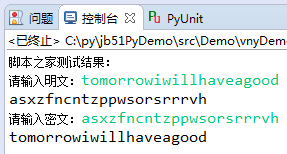python面向对象 反射原理解析
一、静态方法(staticmethod)和类方法(classmethod)
类方法:有个默认参数cls,并且可以直接用类名去调用,可以与类属×××互(也就是可以使用类属性)
静态方法:让类里的方法直接被类调用,就像正常调用函数一样
类方法和静态方法的相同点:都可以直接被类调用,不需要实例化
类方法和静态方法的不同点:
- 类方法必须有一个cls参数表示这个类,可以使用类属性
- 静态方法不需要参数
绑定方法:分为普通方法和类方法
- 普通方法:默认有一个self对象传进来,并且只能被对象调用-------绑定到对象
- 类方法:默认有一个cls对象传进来,并且可以被类和对象(不推荐)调用-----绑定到类
- 非绑定方法:静态方法:没有设置默认参数,并且可以被类和对象(不推荐)调用-----非绑定
import time
class Date:
def __init__(self,year,month,day):
self.year=year
self.month=month
self.day=day
# @staticmethod
# def now():
# t=time.localtime()
# return Date(t.tm_year,t.tm_mon,t.tm_mday)
@classmethod #改成类方法
def now(cls):
t=time.localtime()
return cls(t.tm_year,t.tm_mon,t.tm_mday) #哪个类来调用,即用哪个类cls来实例化
class EuroDate(Date):
def __str__(self):
return 'year:%s month:%s day:%s' %(self.year,self.month,self.day)
e=EuroDate.now()
print(e) #我们想触发EuroDate.__str__,此时e就是由EuroDate产生的,结果如我们所愿
'''
输出结果:
year:2017 month:3 day:3
'''
二、反射
反射:可以用字符串的方式去访问对象的属性,调用对象的方法(但是不能去访问方法),python中一切皆对象,都可以使用反射。
反射有四种方法:
hasattr:hasattr(object,name)判断一个对象是否有name属性或者name方法。有就返回True,没有就返回False
getattr:获取对象的属性或者方法,如果存在则打印出来。hasattr和getattr配套使用
需要注意的是,如果返回的是对象的方法,返回出来的是对象的内存地址,如果需要运行这个方法,可以在后面添加一对()
setattr:给对象的属性赋值,若属性不存在,先创建后赋值
delattr:删除该对象指定的一个属性
1、对象应用反射
class Foo:
def __init__(self):
self.name = 'egon'
self.age = 51
def func(self):
print('hello')
egg = Foo()
print(hasattr(egg,'name')) #先判断name在egg里面存在不存在,结果是True
print(getattr(egg,'name')) #如果为True它才去得到,结果是egon
print(hasattr(egg,'func')) #结果是True
print(getattr(egg,'func')) #得到的是地址<bound method Foo.func of <__main__.Foo object at 0x0000000001DDA2E8>>
getattr(egg,'func')() #在这里加括号才能得到,因为func是方法,结果是hello
一般用法如下,先判断是否hasattr,然后取getattr
if hasattr(egg,'func'):
getattr(egg,'func')() #结果是hello
else:
print('没找到')
2、类应用反射
class Foo:
f = 123
@classmethod
def class_method_dome(cls):
print('class_method_dome')
@staticmethod
def static_method_dome():
print('static_method_dome')
print(hasattr(Foo,'class_method_dome')) #结果是True
method = getattr(Foo,'class_method_dome')
method() #结果是class_method_dome
print(hasattr(Foo,'static_method_dome')) #结果是True
method1 = getattr(Foo,'static_method_dome')
method1() #结果是static_method_dome
3、模块应用反射
# 1.导入其他模块引用
import mymodule print(hasattr(mymodule,'test')) getattr(mymodule,'test')() p = getattr(mymodule,'test') p() #相当于上面getattr(mymodule,'test')()
# 2.在本模块中应用反射
def demo1():
print('hello')
import sys
module_obj = sys.modules[__name__] #相当于'__main__'
print(module_obj) #结果是<module '__main__' from 'C:/Users/Administrator/Desktop/test.py'>
print(hasattr(module_obj,'demo1')) #结果是True
getattr(module_obj,'demo1')() #结果是hello
导入自己的模块的例子:
def 注册():
print('regiester')
def 登录():
print('login')
def 购物():
pass
print('注册,登录,购物')
ret = input('请输入你要做的操作:')
import sys
my_module = sys.modules[__name__] #利用sys模块导入一个自己的模块
if hasattr(my_module,ret):
getattr(my_module,ret)()
以上就是本文的全部内容,希望对大家的学习有所帮助,也希望大家多多支持【听图阁-专注于Python设计】。



